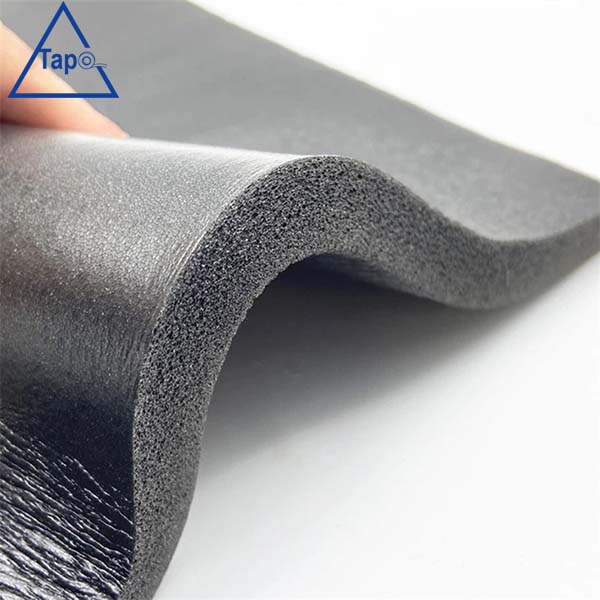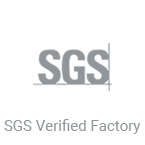Are you looking for spectacle blind flanges for your project? If yes, then you need to read this article. If you want to ask these questions: How do you choose the best spectacle blind flanges for your project? How do you find a reliable and professional spectacle blind flanges manufacturer? How do you install spectacle blind flanges safely and efficiently? Don’t worry; we have the answers for you. This article is the ultimate FAQ guide for spectacle blind flanges. It will help you make an informed decision and save time and money. Are you ready? Let’s go!

Table of Contents
Q1. What is spectacle blind flange?
A: A spectacle blind flange, also known as Figure-8 blank, is a set of plates connected by connecting plates or bars, with a solid end and an open end to maintain pressure. The spectacle blind flange is shaped like a spectacle. One end is a blind plate, and the other end is composed of a throttling ring. The throttling ring is used when transporting fluid, and the blind plate is used when cutting off.

Q2.What is the cost of spectacle blind flange?
A: The prices of spectacle blind flanges of different models, materials, and uses are different, and we will provide the maximum discount based on the customer’s order quantity.Of course, the price/performance ratio of our spectacle blind flange is the highest among our peers. You are welcome to consult with Elite Piping Manufacture for specific price issues.
Q3.What is the use of spectacle blind flange?
A: It is a bit like a shut-off valve. It can be used to cut off the valve when it leaks. Its sealing performance is relatively good. It is generally chosen as a reliable isolation method for systems that require complete isolation. It is mainly used for pipeline interception and is used in pipelines in many industries. These pipelines must often be completely closed or reach full flow without a pressure drop.
Q4.What are the dimensions of spectacle blind flange?
A:Elite Piping Manufacture already has the sizes of spectacle blind flanges required by various industries on the market. We can also produce or change the size of spectacle blind flanges according to customer needs.
Q5.How to choose a better spectacle blind flange manufacturer?
A:There are many flange manufacturers at home and abroad. Choosing the one you want to cooperate with among the many flange manufacturers is difficult. You can learn about relevant flange manufacturers through various channels. If you know Elite Piping Manufacture, we can make a good choice for you.
Q6.What is the purpose of spectacle blind flange?
A: In the pipeline strength test or sealing test, the blind plate in the original start-up preparation stage cannot be used at the same time as the connected equipment (such as turbines, compressors, gasifiers, reactors, etc.), and spectacle blind plates must be installed at the connection between the equipment and the pipeline. Various process material tubes are connected to the boundary area outside the boundary area. When the equipment stops running, a spectacle blind flange should be installed at the shut-off valve.
Q7.What is the standard of the spectacle blind flange ?
A: The basic technical requirements for steel insert plates, gaskets, and figure-8 blind plates for pipelines, including nominal size, nominal pressure, materials, pressure-temperature ratings, sealing surface dimensions, tolerances, and markings, etc., should be used in conjunction with national or industry standards. It is divided into two series: the European and American systems.
Q8.What is ASME B16.48 Spectacle Blind Flange?
A: ASME (American Society of Mechanical Engineers) standards include detailed regulations on flange form, size, shape, and angle of bolts and flange sealing surfaces.B16.48 Line Blanks. This standard covers the pressure-temperature ratings, materials, dimensions, Dimensional tolerances, marking, and testing. Dimensions apply to blanks made of materials listed in Table 1. ASME B16.48 covers pressure-temperature ratings, materials, dimensions, tolerances, marking, and testing of line blinds from 1/2″ to 24″. These pipeline blanking plates are used with ASME B16.5 flanges.
Q9.How do you install ASME B 16.48 spectacle blind?
A: ASME B 16.48 spectacle blinds usually need to be isolated from other facilities or devices in piping systems. Typically, the ASME B 16.48 spectacle blind is open to allow fluid to pass through the pipe. When the ASME B 16.48 spectacle blind is in the closed position, the pipeline is closed, and the fluid is blocked. Maintenance of the ductwork is one reason why the ASME B 16.48 spectacle blind is rotated to the closed position. There is a hole in the connecting web of the figure 8 blind plate. Loosen and disassemble some of the bolts. The ASME B 16.48 spectacle blind can be rotated between flanges. After replacing the gasket, the bolts can be reassembled and tightened.
Q10.How about the weight of the spectacle blind flange?
A: Our spectacle blind flanges have different systems, forms, and sealing surfaces. The pressure and diameter of the flange are also different, and so is its weight.
Q11.How does a spectacle blind flange work?
A:The blind plate valve has three driving devices, including two manual clamping or loosening devices and an electric device for opening or closing the gate. When opening or closing the gate, first release the two manual devices, and then Restart the electric device to achieve the purpose of opening or closing the gate (special attention: Do not loosen the two manual devices and do not turn on the electric device). After the opening or closing of the gate is completed, clamp the two manual devices again, and the pipeline Only then can the work be carried out.
Q12.How to choose the thickness of spectacle blind flange?
A:The thickness of the eyeglass blind flange is related to the inner diameter of the concave or flat flange gasket or the average diameter of the annular groove gasket and the designed pressure. The appropriate thickness needs to be selected according to the purpose of the glasses blind flange.
Q13.What types of spectacle blind flanges are there?
A: Spectacle blind flanges can be divided into 8-shaped blind plates, insert plates, and gaskets according to type classification; according to the sealing surface classification, they can be flat or convex surface, concave and convex surface, tongue and groove surface, ring connection surface; according to the material Classification can be divided into metal materials or non-metal materials.

Q14.When to use spectacle blind flange?
A: The Figure 8 blind plate is shaped like a Figure 8. One end is a blind plate, and the other is a throttling ring, but the diameter is the same as the diameter of the pipe and does not play a throttling role. The spectacle blind plate is easy to use. When isolation is required, use the blind plate end. When normal operation is required, use the throttle ring end. It can also be used to fill the installation gap of the blind plate on the pipeline. Another feature is that the signs are clearly visible, making it easy to identify the installation status.
Q15.Where to use spectacle blind flange?
A: The blind plate acts as isolation and cutting, which is the same function as the head, pipe cap, and welding plug. Due to its good sealing performance, it is generally used as a reliable isolation method for systems that require complete isolation. A flat plate blind plate is a solid circle with a handle for normally isolated systems.
Q16.How to use spectacle blind flange?
A:The blind plate should be set at the location where isolation (cut-off) is required, such as the equipment connecting port, the front and rear of the shut-off valve, or between two flanges. It is usually recommended to use a spectacle plate; insert plates (round blind plates) can also be used for one-time use parts such as pressing and purging.





